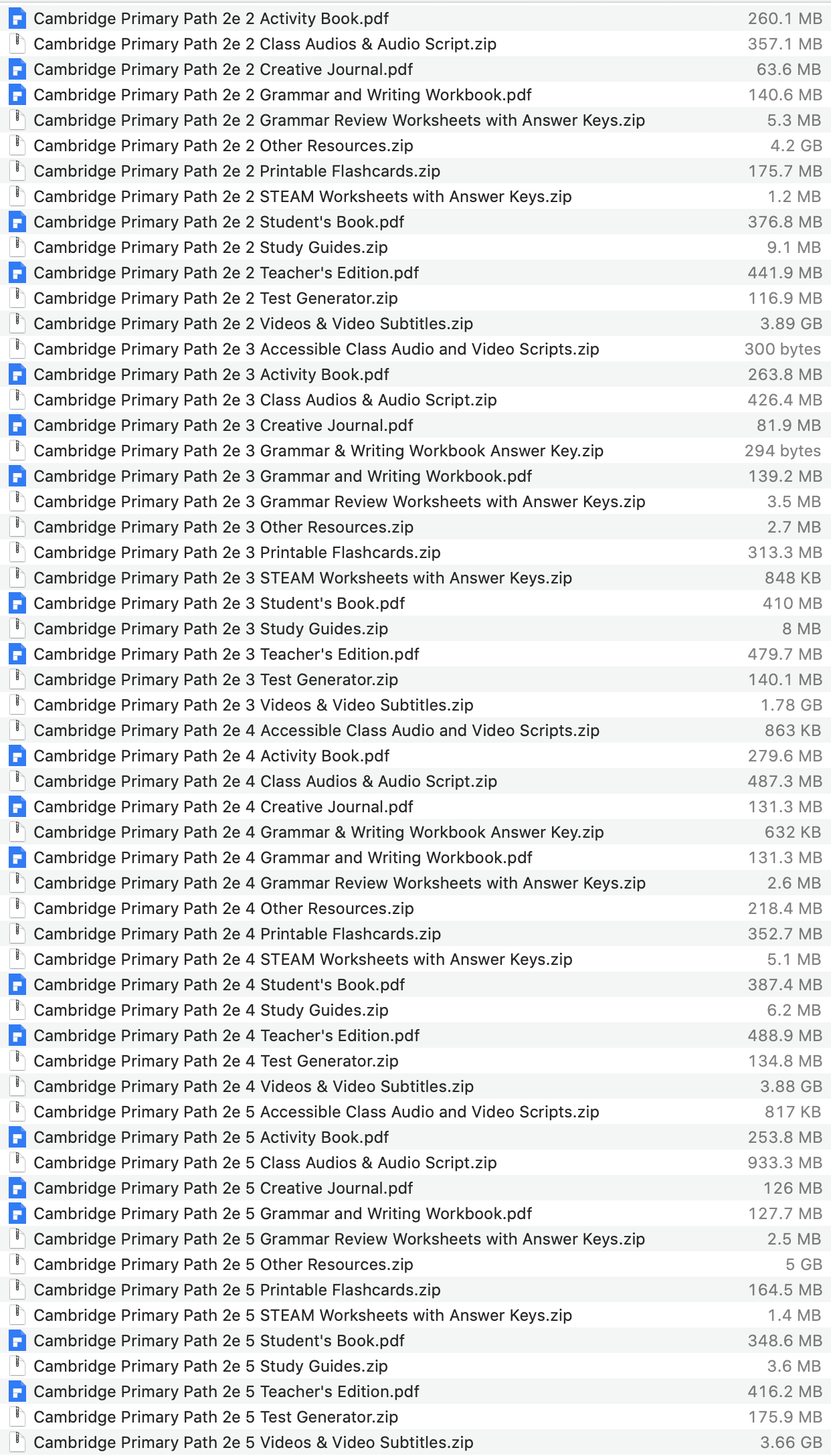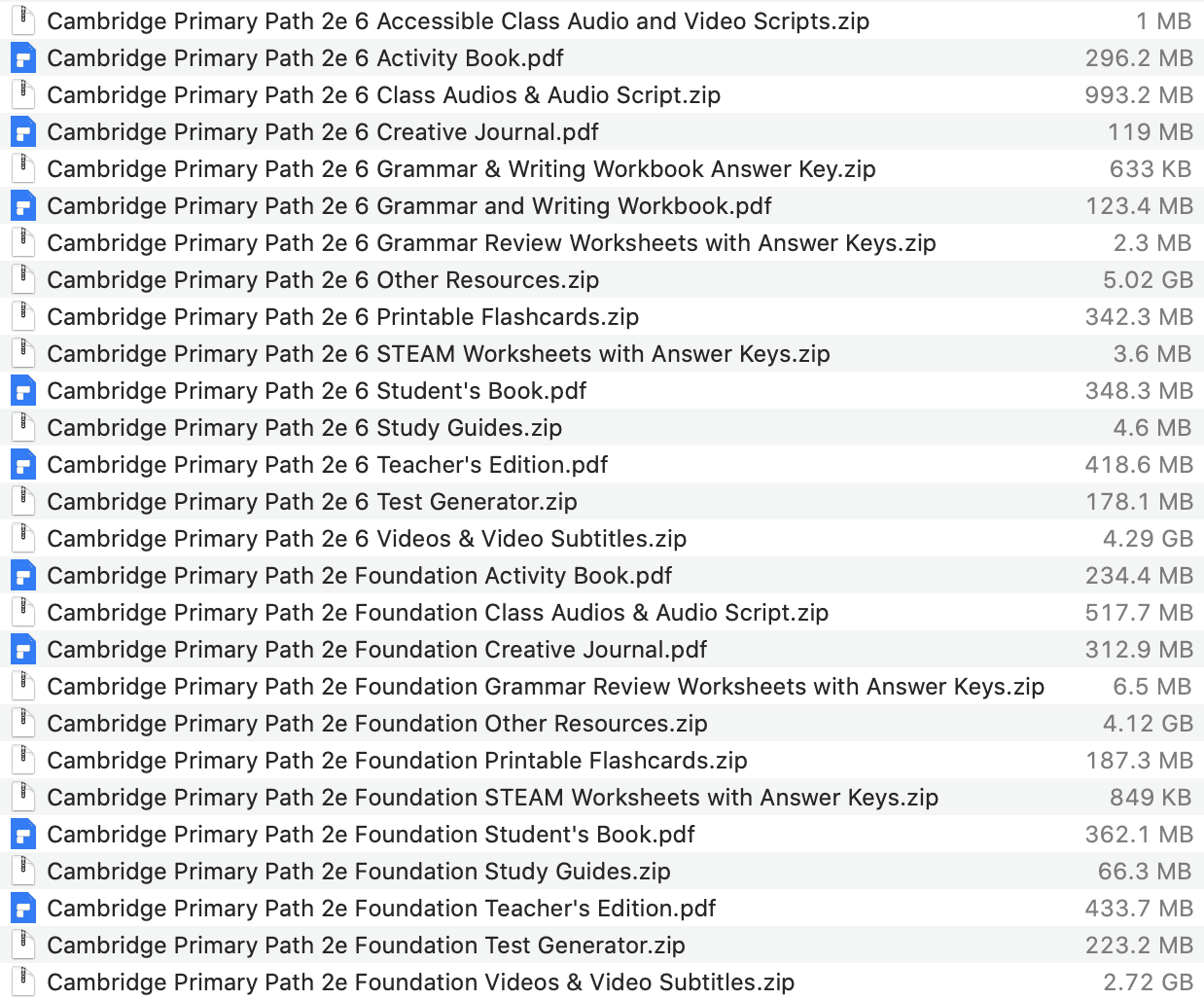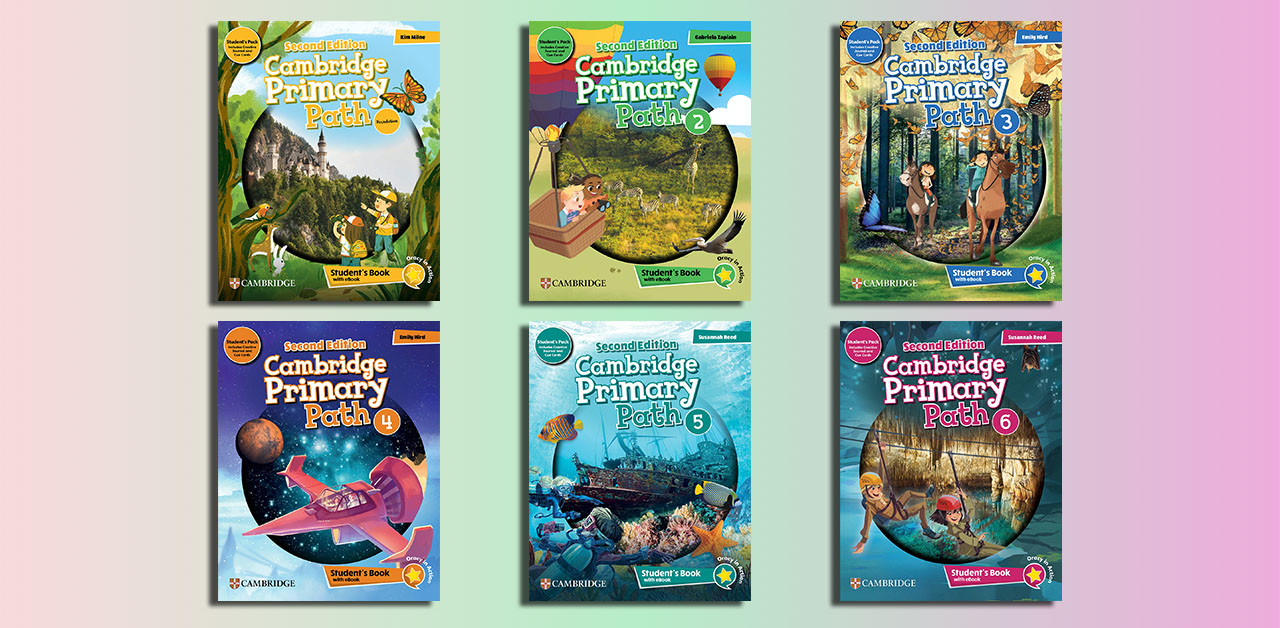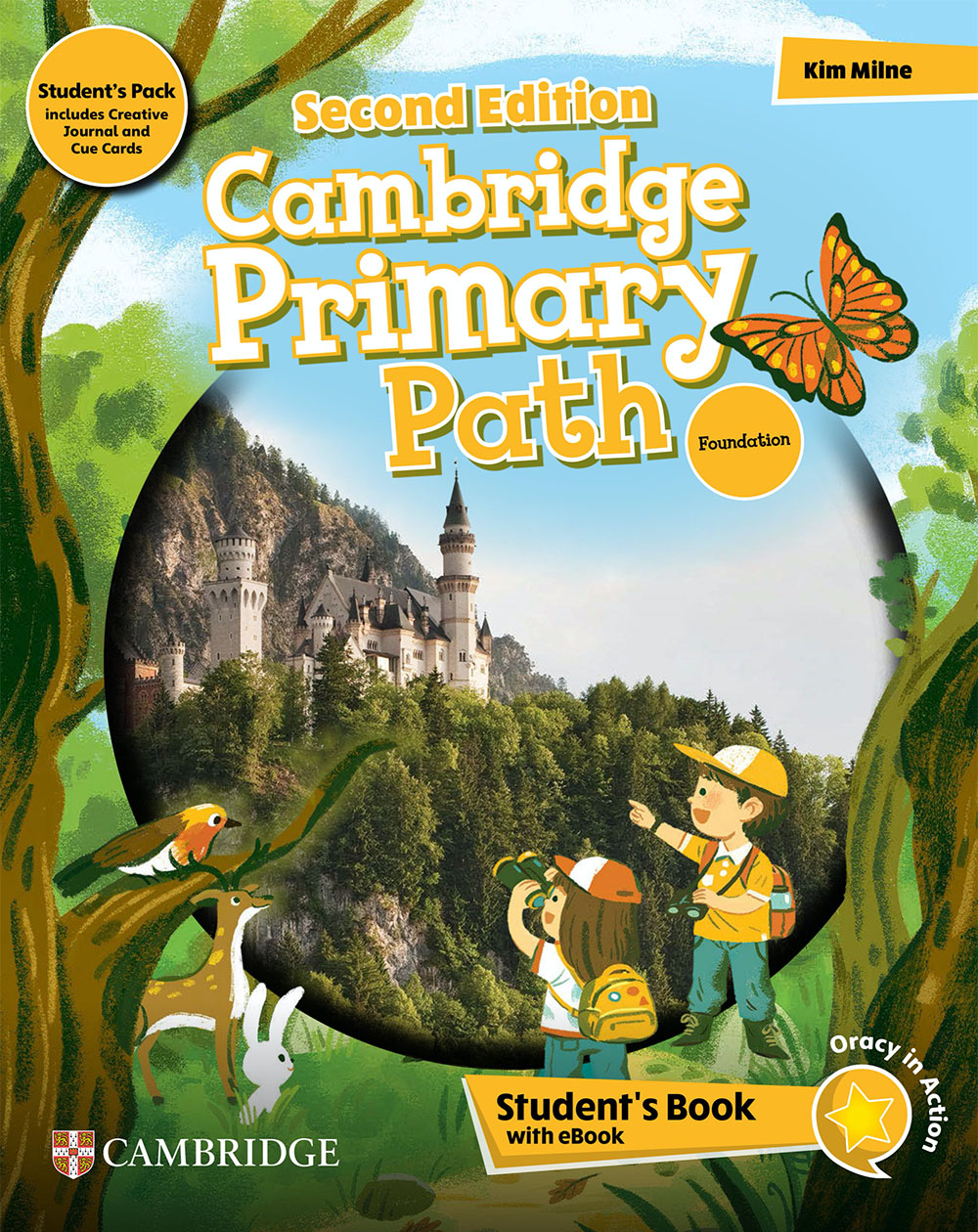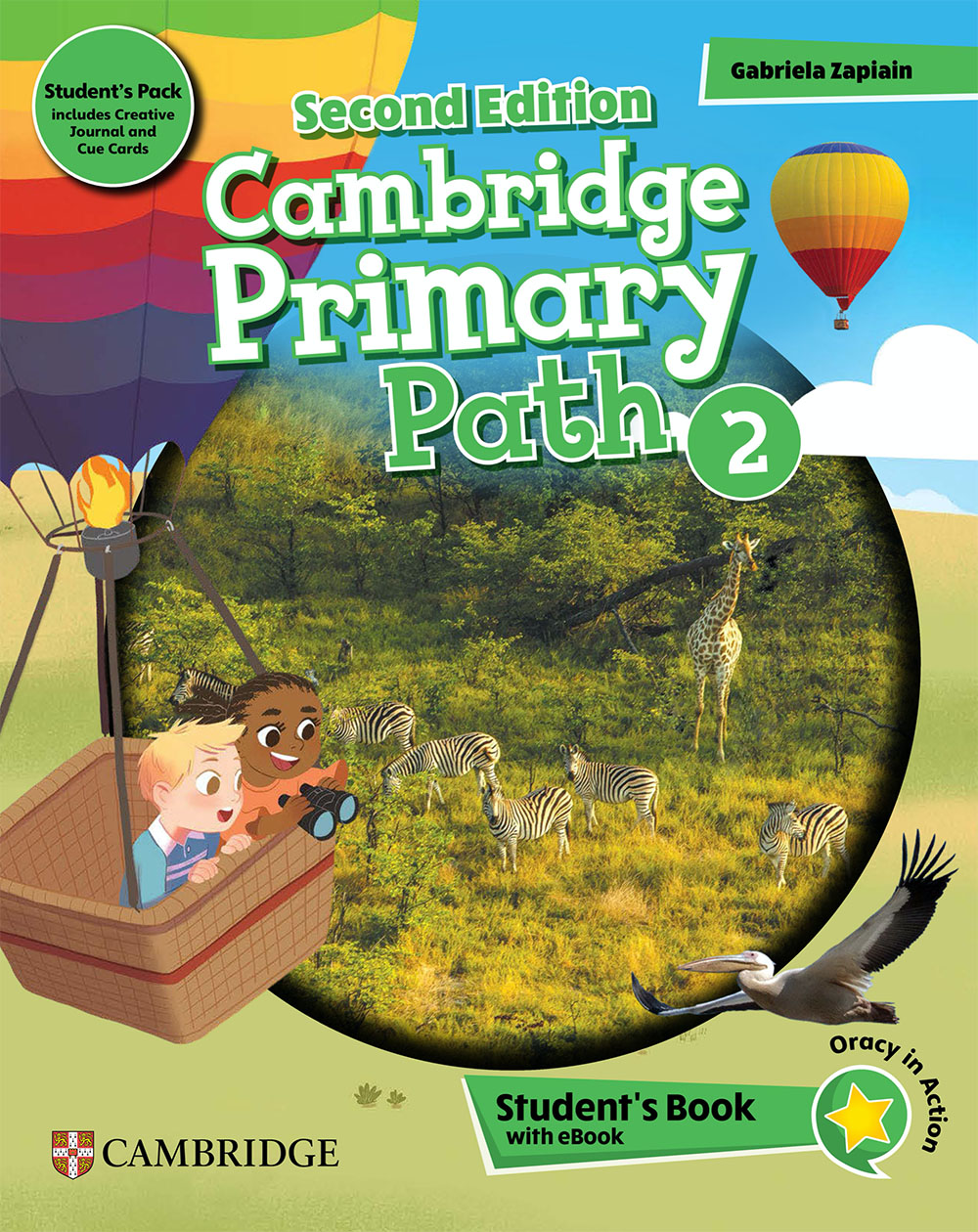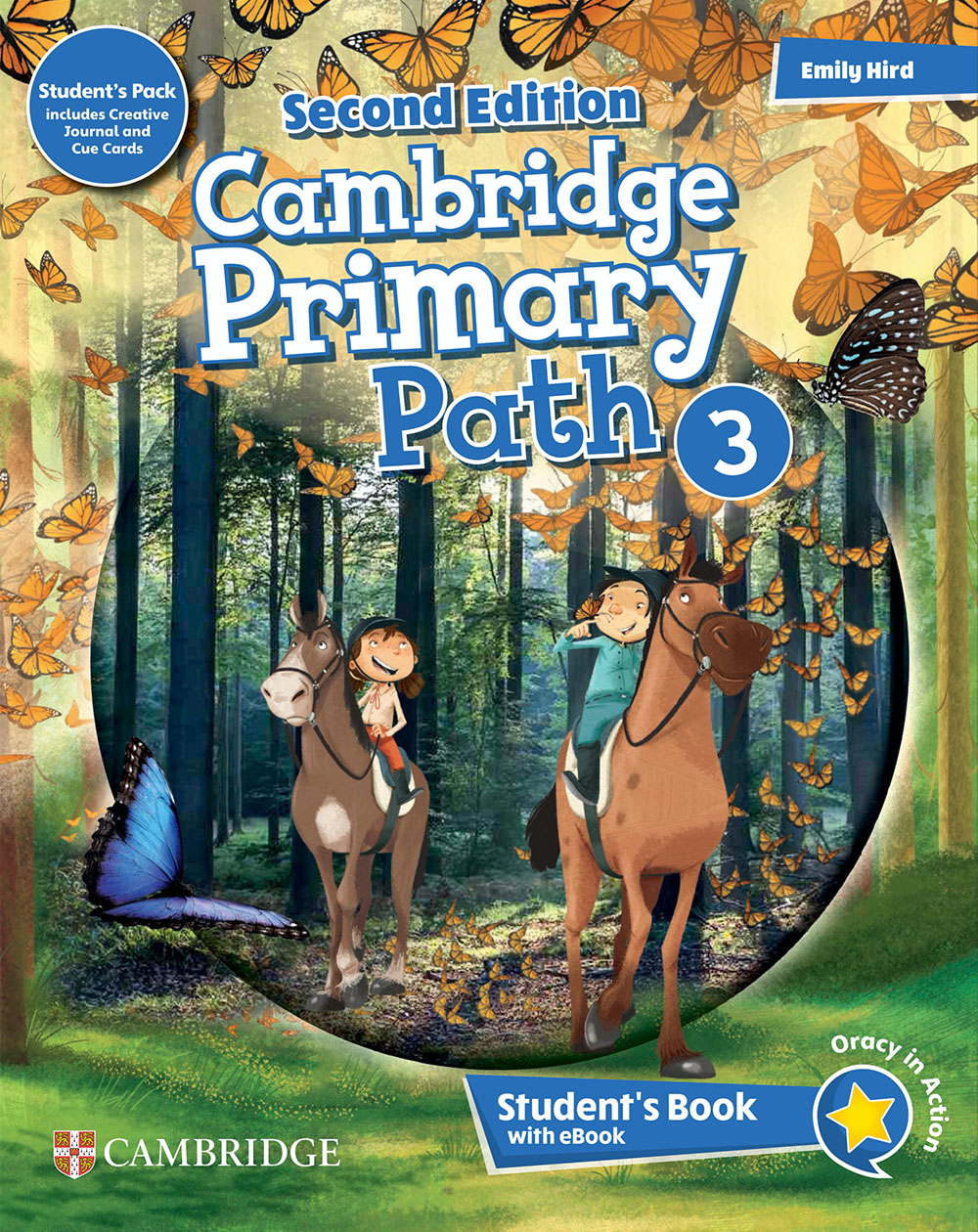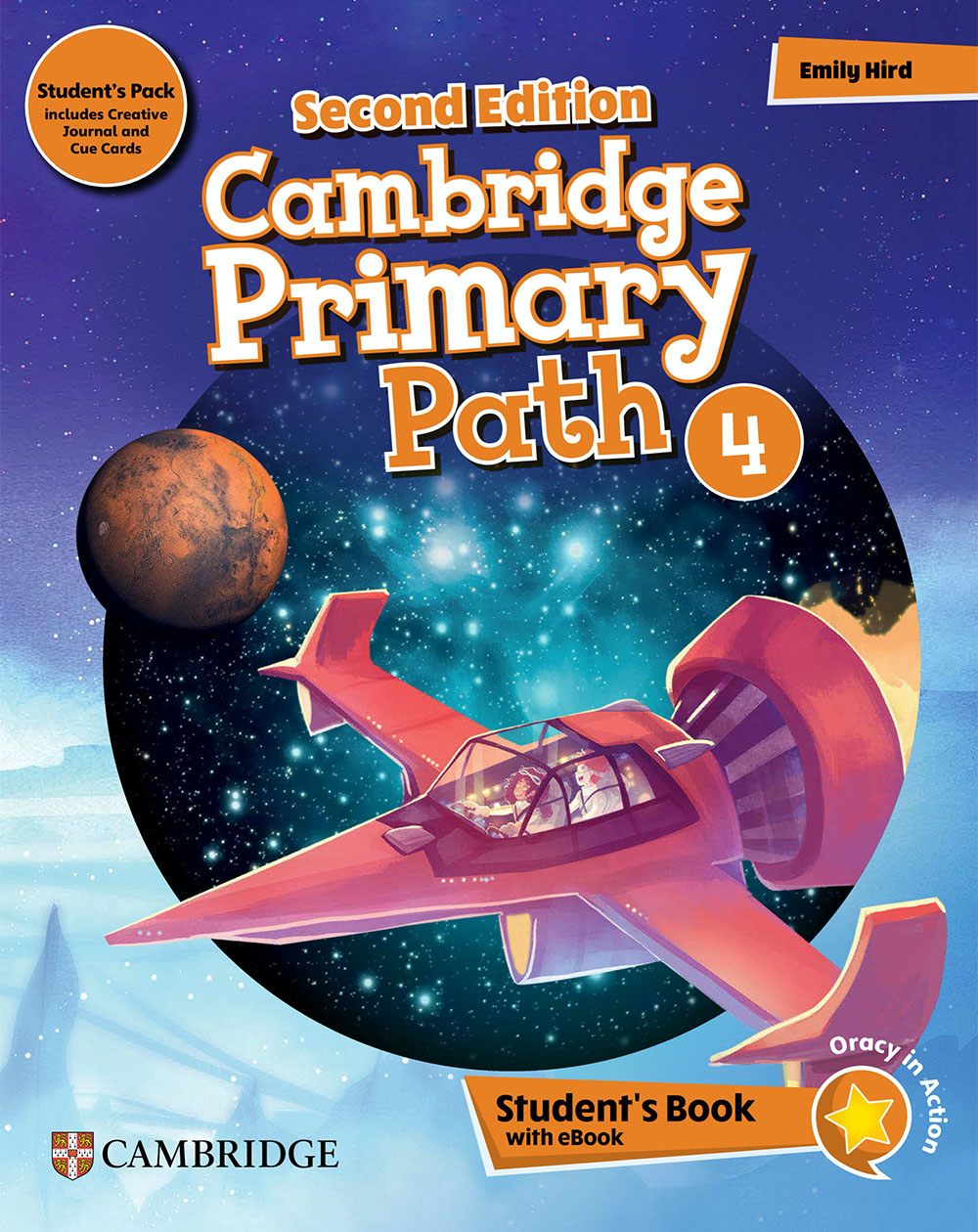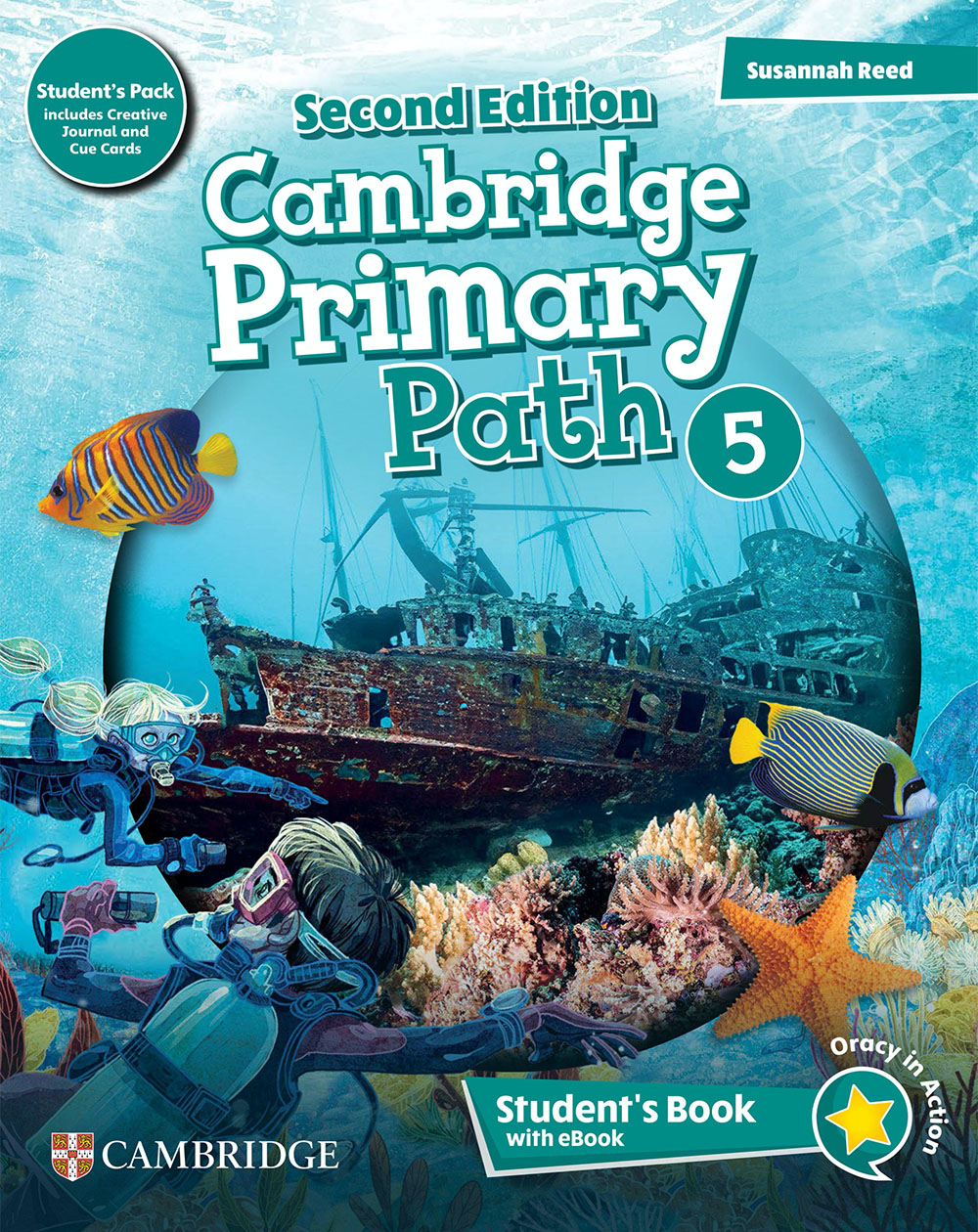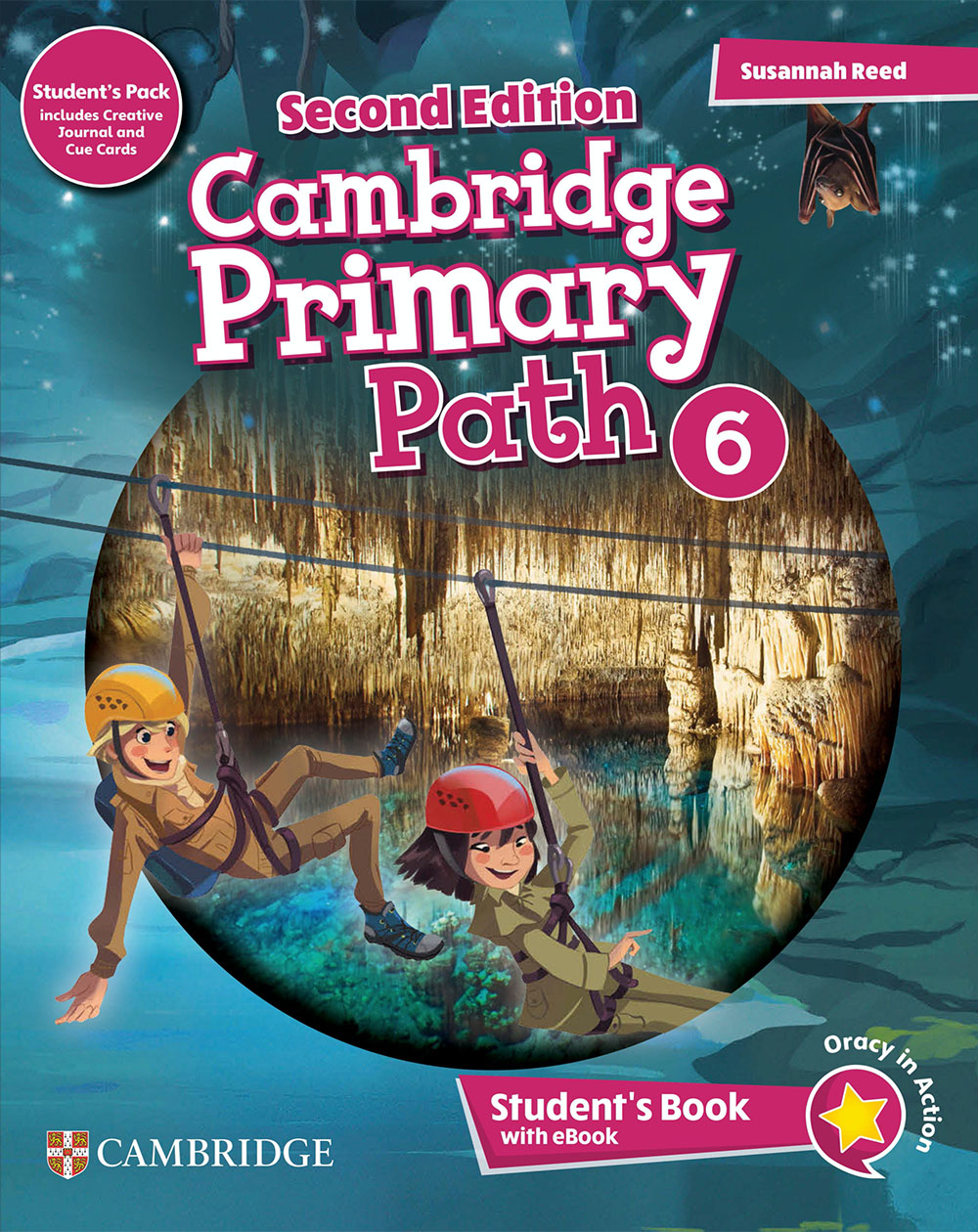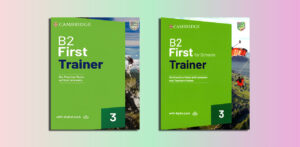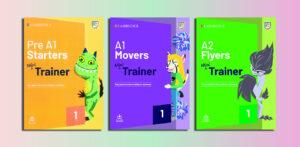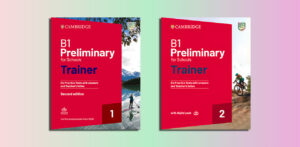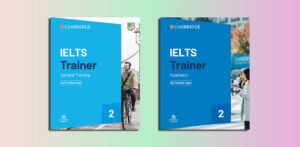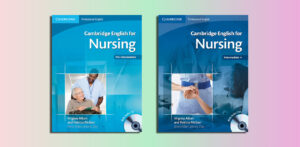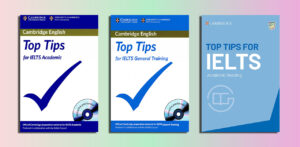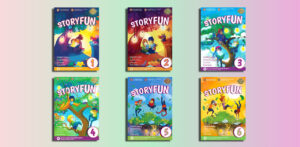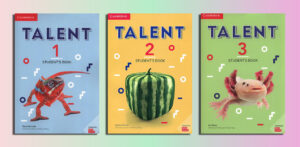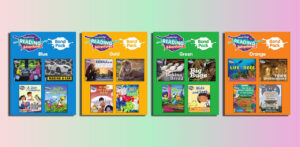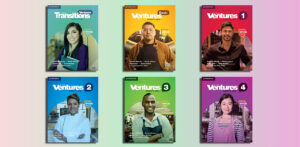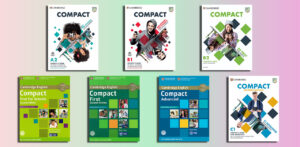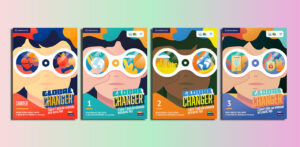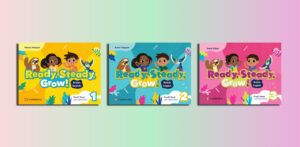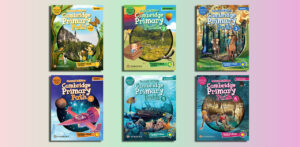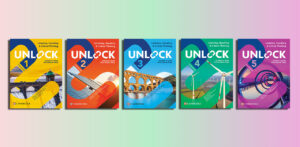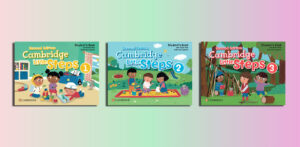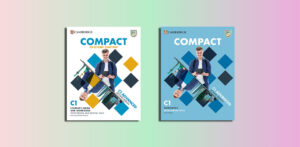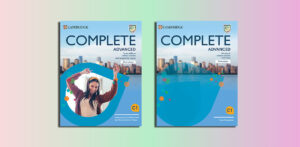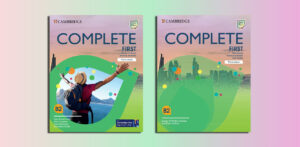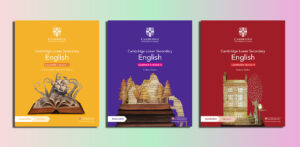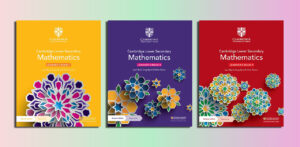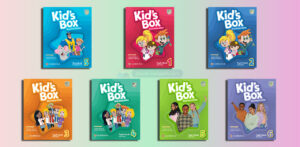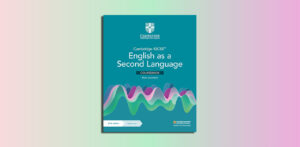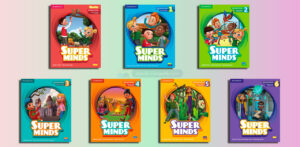Cambridge Primary Path 2nd Edition (PDFs, Resources)
Level 2
Cambridge Primary Path 2e 2 Activity Book.pdf – Sample: Click
Cambridge Primary Path 2e 2 Class Audios & Audio Script.zip
Cambridge Primary Path 2e 2 Creative Journal.pdf
Cambridge Primary Path 2e 2 Grammar and Writing Workbook.pdf – Sample: Click
Cambridge Primary Path 2e 2 Grammar Review Worksheets with Answer Keys.zip
Cambridge Primary Path 2e 2 Other Resources.zip
Cambridge Primary Path 2e 2 Printable Flashcards.zip
Cambridge Primary Path 2e 2 STEAM Worksheets with Answer Keys.zip
Cambridge Primary Path 2e 2 Student’s Book.pdf – Sample: Click
Cambridge Primary Path 2e 2 Study Guides.zip
Cambridge Primary Path 2e 2 Teacher’s Edition.pdf
Cambridge Primary Path 2e 2 Test Generator.zip
Cambridge Primary Path 2e 2 Videos & Video Subtitles.zip
Level 3
Cambridge Primary Path 2e 3 Accessible Class Audio and Video Scripts.zip
Cambridge Primary Path 2e 3 Activity Book.pdf – Sample: Click
Cambridge Primary Path 2e 3 Class Audios & Audio Script.zip
Cambridge Primary Path 2e 3 Creative Journal.pdf
Cambridge Primary Path 2e 3 Grammar & Writing Workbook Answer Key.zip
Cambridge Primary Path 2e 3 Grammar and Writing Workbook.pdf – Sample: Click
Cambridge Primary Path 2e 3 Grammar Review Worksheets with Answer Keys.zip
Cambridge Primary Path 2e 3 Other Resources.zip
Cambridge Primary Path 2e 3 Printable Flashcards.zip
Cambridge Primary Path 2e 3 STEAM Worksheets with Answer Keys.zip
Cambridge Primary Path 2e 3 Student’s Book.pdf – Sample: Click
Cambridge Primary Path 2e 3 Study Guides.zip
Cambridge Primary Path 2e 3 Teacher’s Edition.pdf
Cambridge Primary Path 2e 3 Test Generator.zip
Cambridge Primary Path 2e 3 Videos & Video Subtitles.zip
Level 4
Cambridge Primary Path 2e 4 Accessible Class Audio and Video Scripts.zip
Cambridge Primary Path 2e 4 Activity Book.pdf – Sample: Click
Cambridge Primary Path 2e 4 Class Audios & Audio Script.zip
Cambridge Primary Path 2e 4 Creative Journal.pdf
Cambridge Primary Path 2e 4 Grammar & Writing Workbook Answer Key.zip
Cambridge Primary Path 2e 4 Grammar and Writing Workbook.pdf – Sample: Click
Cambridge Primary Path 2e 4 Grammar Review Worksheets with Answer Keys.zip
Cambridge Primary Path 2e 4 Other Resources.zip
Cambridge Primary Path 2e 4 Printable Flashcards.zip
Cambridge Primary Path 2e 4 STEAM Worksheets with Answer Keys.zip
Cambridge Primary Path 2e 4 Student’s Book.pdf – Sample: Click
Cambridge Primary Path 2e 4 Study Guides.zip
Cambridge Primary Path 2e 4 Teacher’s Edition.pdf
Cambridge Primary Path 2e 4 Test Generator.zip
Cambridge Primary Path 2e 4 Videos & Video Subtitles.zip
Level 5
Cambridge Primary Path 2e 5 Accessible Class Audio and Video Scripts.zip
Cambridge Primary Path 2e 5 Activity Book.pdf – Sample: Click
Cambridge Primary Path 2e 5 Class Audios & Audio Script.zip
Cambridge Primary Path 2e 5 Creative Journal.pdf
Cambridge Primary Path 2e 5 Grammar and Writing Workbook.pdf – Sample: Click
Cambridge Primary Path 2e 5 Grammar Review Worksheets with Answer Keys.zip
Cambridge Primary Path 2e 5 Other Resources.zip
Cambridge Primary Path 2e 5 Printable Flashcards.zip
Cambridge Primary Path 2e 5 STEAM Worksheets with Answer Keys.zip
Cambridge Primary Path 2e 5 Student’s Book.pdf
Cambridge Primary Path 2e 5 Study Guides.zip
Cambridge Primary Path 2e 5 Teacher’s Edition.pdf – Sample: Click
Cambridge Primary Path 2e 5 Test Generator.zip
Cambridge Primary Path 2e 5 Videos & Video Subtitles.zip
Level 6
Cambridge Primary Path 2e 6 Accessible Class Audio and Video Scripts.zip
Cambridge Primary Path 2e 6 Activity Book.pdf – Sample: Click
Cambridge Primary Path 2e 6 Class Audios & Audio Script.zip
Cambridge Primary Path 2e 6 Creative Journal.pdf
Cambridge Primary Path 2e 6 Grammar & Writing Workbook Answer Key.zip
Cambridge Primary Path 2e 6 Grammar and Writing Workbook.pdf – Sample: Click
Cambridge Primary Path 2e 6 Grammar Review Worksheets with Answer Keys.zip
Cambridge Primary Path 2e 6 Other Resources.zip
Cambridge Primary Path 2e 6 Printable Flashcards.zip
Cambridge Primary Path 2e 6 STEAM Worksheets with Answer Keys.zip
Cambridge Primary Path 2e 6 Student’s Book.pdf – Sample: Click
Cambridge Primary Path 2e 6 Study Guides.zip
Cambridge Primary Path 2e 6 Teacher’s Edition.pdf
Cambridge Primary Path 2e 6 Test Generator.zip
Cambridge Primary Path 2e 6 Videos & Video Subtitles.zip
Level Foundation
Cambridge Primary Path 2e Foundation Activity Book.pdf – Sample: Click
Cambridge Primary Path 2e Foundation Class Audios & Audio Script.zip
Cambridge Primary Path 2e Foundation Creative Journal.pdf
Cambridge Primary Path 2e Foundation Grammar Review Worksheets with Answer Keys.zip
Cambridge Primary Path 2e Foundation Other Resources.zip
Cambridge Primary Path 2e Foundation Printable Flashcards.zip
Cambridge Primary Path 2e Foundation STEAM Worksheets with Answer Keys.zip
Cambridge Primary Path 2e Foundation Student’s Book.pdf – Sample: Click
Cambridge Primary Path 2e Foundation Study Guides.zip
Cambridge Primary Path 2e Foundation Teacher’s Edition.pdf
Cambridge Primary Path 2e Foundation Test Generator.zip
Cambridge Primary Path 2e Foundation Videos & Video Subtitles.zip
Overview of the “Cambridge Primary Path 2nd Edition” by Cambridge
Contents
| ✅ Coursebook: | Cambridge Primary Path 2nd Edition |
| ✅ Author: | Kim Milne, Aida Berber, Gabriela Zapiain, Emily Hird, Susannah Reed |
| ✅ English type: | International English |
| ✅ Levels: | Pre A1, A1, A2, B1, B2 |
| ✅ Publisher: | Cambridge University Press |
| ✅ For: | Primary School |
| ✅ Publication year: | 2025 |
Cambridge Primary Path Second Edition is a comprehensive English language and literacy course designed for young learners aged 6 to 12, aimed at developing articulate speakers and writers of English while fostering critical thinking, creativity, and collaboration. The course is built on three research-based pillars: oracy, literacy, and creativity, creating a holistic learning experience that prepares students for future opportunities. It is published by Cambridge University Press & Assessment and is an evolution of the first edition, incorporating teacher feedback to enhance teaching and learning with new print and digital features.
Key Features
Three Core Pillars:
- Oracy: Based on a unique Oracy Framework developed with University of Cambridge experts, the course emphasizes physical, cognitive, and social-emotional skills for effective communication.
- Enhanced in the second edition with printed cue cards, posters, extension activities, and a digital Oracy Pack including teacher training videos, assessment grids, and downloadable content like warm-ups and games. Oracy in Action videos showcase real students engaging in group work and presentations.
- Literacy-Based Approach: Students engage with 18 authentic fiction and nonfiction texts per level, linked to thematic “Big Questions.” These texts build a rich vocabulary and encourage critical thinking, enabling students to explore and express ideas in various written forms.
- Creativity: Activities are designed around creativity principles, encouraging experimentation and problem-solving. Each student has a Creative Journal to nurture imagination and self-expression, fostering critical thinking through engaging tasks.
Big Questions and Big Challenges:
- Each unit begins with a Big Question (e.g., “Why do we explore?” or “What makes a community strong?”) introduced through a unit-opener video to spark curiosity and critical thinking from multiple perspectives.
- Units culminate in Big Challenge projects, where students apply language and knowledge creatively, often integrating STEAM (Science, Technology, Engineering, Arts, Math) methodologies with supporting worksheets and extension activities.
Comprehensive Resources:
- Student’s Book: Includes 18 reading texts per level, functional language cue cards, and embedded audio/video in eBook versions.
- Activity Book with Practice Extra: Offers additional online activities via Cambridge One, including interactive videos, digital flashcards, and oracy cue cards.
- Creative Journal: A personal space for students to reflect and express creativity, reinforcing their learning journey.
- Teacher’s Edition: Provides detailed lesson plans, assessment grids, and downloadable resources like STEAM worksheets and test generators.
- Digital Resources: Includes videos, interactive grammar and story animations, Kahoot! practice activities, and a Teacher’s Digital Pack with audio/video resources.
- Flashcards: Support vocabulary acquisition through visual and oral connections, ideal for revision games.
- Cambridge Primary Reading Anthologies: Supplementary illustrated stories and nonfiction texts aligned with the course’s Big Questions.
STEAM Integration: Select Big Challenge projects incorporate STEAM, encouraging interdisciplinary learning through hands-on, problem-solving activities supported by worksheets.
Digital Support: The course leverages Cambridge One for interactive activities, videos, and teacher resources, with eBooks offering embedded audio and video. The platform’s child-friendly design motivates students through a clear learning pathway.
Cambridge Primary Path 2nd Foundation Student’s Book
Who is suitable for “Cambridge Primary Path 2nd Edition”?
Cambridge Primary Path Second Edition is designed for young learners aged 6 to 12 who are developing their English language and literacy skills, typically in primary school settings. It is suitable for:
English as a Second Language (ESL) or English as a Foreign Language (EFL) Students:
- Ideal for non-native English speakers at beginner to intermediate proficiency levels.
- The course supports students in building foundational skills in reading, writing, speaking, and listening through engaging, age-appropriate content.
Primary School Students:
- Aligned with the needs of children in grades 1–6 (or equivalent), covering a range of academic and developmental stages.
- Particularly effective for students transitioning from early learning programs like Cambridge Little Steps Second Edition to more structured English learning.
Students in International or Bilingual Schools:
- Suited for schools following international curricula or those integrating English with other subjects, thanks to its STEAM (Science, Technology, Engineering, Arts, Math) components and inquiry-based approach.
Teachers and Educators:
- ESL/EFL teachers seeking a comprehensive, research-based curriculum with strong support for oracy, literacy, and creativity.
- The course’s Teacher’s Edition, digital resources, and assessment tools make it suitable for educators looking for structured lesson plans and flexible teaching materials.
Parents Supporting Home Learning:
- Parents who want to supplement their child’s English learning at home can use components like the Activity Book with Practice Extra, Creative Journal, and Cambridge One digital resources, which are child-friendly and engaging.
Students Developing 21st-Century Skills:
- The course’s focus on critical thinking, collaboration, and creativity makes it ideal for students preparing for future academic and professional environments.
- Big Questions and Big Challenge projects encourage problem-solving, teamwork, and global awareness, suitable for learners who thrive in inquiry-based settings.
Learners Interested in STEAM:
- Students with an interest in interdisciplinary learning will benefit from the STEAM-integrated projects, which combine English with hands-on activities in science, technology, engineering, arts, and math.
Cambridge Primary Path 2nd 2 Student’s Book
The benefits of “Cambridge Primary Path 2nd Edition”
Cambridge Primary Path Second Edition offers a range of benefits for young learners aged 6–12, teachers, and parents, fostering English language proficiency while developing critical thinking, creativity, and collaboration. Below are the key benefits, grounded in its research-based pillars of oracy, literacy, and creativity:
1. Holistic Language Development
- Comprehensive English Skills: The course builds proficiency in reading, writing, speaking, and listening through 18 authentic fiction and nonfiction texts per level, ensuring well-rounded language acquisition.
- Oracy Focus: The unique Oracy Framework, developed with University of Cambridge experts, enhances communication skills by targeting physical (e.g., voice projection), cognitive (e.g., structuring ideas), and social-emotional (e.g., collaboration) aspects. This helps students become confident, articulate speakers.
- Vocabulary and Grammar: Engaging texts and activities, supported by flashcards and digital resources, promote rich vocabulary acquisition and grammar understanding, tailored to young learners’ needs.
2. Critical Thinking and Inquiry-Based Learning
- Big Questions: Each unit’s thematic Big Question (e.g., “Why do we explore?”) sparks curiosity and encourages students to explore ideas from multiple perspectives, fostering critical thinking and global awareness.
- Big Challenge Projects: These culminating projects promote problem-solving and application of language skills in real-world contexts, encouraging students to think creatively and collaboratively.
- STEAM Integration: Select projects incorporate Science, Technology, Engineering, Arts, and Math, blending English with interdisciplinary skills to prepare students for 21st-century challenges.
3. Creativity and Self-Expression
- Creative Journal: Each student receives a Creative Journal to reflect, experiment, and express ideas, nurturing imagination and personal growth.
- Creative Tasks: Activities rooted in creativity principles encourage students to take risks, explore new ideas, and develop innovative solutions, enhancing engagement and motivation.
4. Engaging and Age-Appropriate Content
- Authentic Texts: The inclusion of diverse, high-quality texts (fiction and nonfiction) makes learning relevant and engaging, helping students connect English to real-world themes.
- Multimedia Resources: Unit-opener videos, Oracy in Action videos, and interactive grammar/story animations on Cambridge One captivate young learners, making lessons dynamic and accessible.
- Child-Friendly Design: The course’s visuals, stories, and digital platform are tailored to young learners, ensuring an enjoyable and motivating learning experience.
Cambridge Primary Path 2nd 3 Student’s Book
5. Collaboration and Social Skills
- Group Activities: Oracy tasks and Big Challenge projects emphasize teamwork, helping students develop interpersonal skills and confidence in group settings.
- Social-Emotional Learning: The oracy pillar supports emotional intelligence by teaching students how to listen actively, express ideas respectfully, and collaborate effectively.
6. Teacher and Classroom Support
- Comprehensive Resources: The Teacher’s Edition includes detailed lesson plans, assessment grids, and downloadable resources (e.g., STEAM worksheets, test generators), saving teachers preparation time.
- Oracy Support: The digital Oracy Pack offers training videos, assessment tools, cue cards, and posters, empowering teachers to implement oracy effectively.
- Flexibility: The course supports both in-person and hybrid learning with print and digital materials, including eBooks with embedded audio/video and interactive activities on Cambridge One.
7. Accessibility for Home and School
- Digital Platform: Cambridge One provides a user-friendly interface for students, teachers, and parents, with interactive activities, videos, and progress tracking, supporting learning at home or in the classroom.
- Practice Extra: The Activity Book with Practice Extra includes additional online tasks, digital flashcards, and oracy cue cards, reinforcing learning outside the classroom.
8. Progression and Continuity
- Levelled Structure: Spanning multiple levels (1–6, with Level 1 in the first edition), the course supports students’ progression from beginner to intermediate English proficiency.
- Seamless Transition: For younger learners, Cambridge Little Steps Second Edition aligns with the same pillars, ensuring a smooth transition to Primary Path.
9. 21st-Century Skills Preparation
- The course equips students with skills like critical thinking, creativity, collaboration, and communication, essential for academic success and future careers.
- STEAM projects and inquiry-based learning foster problem-solving and adaptability, preparing students for a rapidly changing world.
10. Motivation and Engagement
- Gamified Learning: Digital resources like Kahoot! practice activities and interactive videos make learning fun and rewarding.
- Personalized Learning: The Creative Journal and flexible activities allow students to explore their interests, boosting motivation and ownership of their learning journey.
Cambridge Primary Path 2nd 4 Student’s Book
Effective learning strategies for “Cambridge Primary Path 2nd Edition”
To maximize the benefits of Cambridge Primary Path Second Edition for young learners aged 6–12, teachers, parents, and students can employ targeted strategies that align with the course’s pillars of oracy, literacy, and creativity. Below are practical, research-informed strategies to enhance engagement, retention, and skill development while using this curriculum.
1. Leverage the Oracy Framework for Communication Skills
Use Oracy Activities Actively:
- Implement the Oracy in Action videos and cue cards to model effective communication. Encourage students to practice physical (e.g., clear pronunciation), cognitive (e.g., organizing thoughts), and social-emotional (e.g., active listening) skills during group discussions or presentations.
- Strategy: Pair students for role-plays or debates based on unit themes (e.g., “Why do we explore?”), using the provided oracy posters to guide turn-taking and respectful dialogue.
Incorporate Warm-Ups and Games:
- Utilize the downloadable oracy warm-ups and games from the Oracy Pack on Cambridge One to make speaking fun and low-pressure. For example, use “word chain” games to build vocabulary or fluency.
- Strategy: Start each lesson with a 5-minute oracy warm-up to build confidence, such as describing a picture or answering a Big Question in pairs.
Assess and Reflect:
- Use the oracy assessment grids to track students’ progress in speaking and listening. Provide specific feedback on strengths (e.g., clear voice) and areas for improvement (e.g., eye contact).
- Strategy: Have students self-assess after group tasks using simple checklists from the Oracy Pack to foster awareness of their communication skills.
Cambridge Primary Path 2nd 5 Student’s Book
2. Enhance Literacy Through Authentic Texts
Engage with Big Questions:
- Use the unit-opener Big Question videos to spark curiosity and activate prior knowledge. Encourage students to predict answers or brainstorm related ideas before diving into the 18 fiction and nonfiction texts per level.
- Strategy: Create a “question wall” where students post their thoughts or related questions about the Big Question, revisiting it throughout the unit to deepen understanding.
Scaffold Reading and Writing:
- Break down complex texts into manageable parts using guided reading techniques. For example, pre-teach key vocabulary with flashcards, then ask comprehension questions tied to the text’s theme.
- Strategy: Use the Grammar and Writing Workbook to practice writing responses to text-based questions, starting with sentence starters for younger learners (e.g., “I think… because…”).
Encourage Active Reading:
- Promote annotation or highlighting of key ideas in texts to build critical reading skills. Pair this with discussions to connect texts to the Big Question.
- Strategy: Have students create mind maps summarizing a text’s main ideas, linking them to real-world examples or personal experiences.
3. Foster Creativity Through the Creative Journal
Personalize Learning:
- Encourage students to use the Creative Journal for free writing, drawing, or brainstorming ideas related to unit themes. This builds ownership and allows self-expression.
- Strategy: Set aside 10 minutes per week for “journal time” where students respond to creative prompts (e.g., “Draw or write about a place you’d explore”).
Integrate Creative Projects:
- Use the Big Challenge projects to encourage experimentation. For example, in a STEAM-based project, students might design a model or poster, combining English with hands-on creativity.
- Strategy: Allow choice in how students present their Big Challenge (e.g., a poster, skit, or digital presentation) to cater to different learning styles.
Promote Risk-Taking:
- Create a safe environment where mistakes are part of learning. Praise effort and originality in journal entries or project presentations to boost confidence.
- Strategy: Use “gallery walks” where students display their Creative Journal work and provide peer feedback using positive phrases like “I like how you…”.
4. Maximize Digital Resources for Engagement
Utilize Cambridge One:
- Assign interactive activities, such as grammar animations or Kahoot! quizzes, to reinforce vocabulary and concepts in a gamified format.
- Strategy: Create a weekly “digital challenge” where students complete a set number of Practice Extra activities, earning points or badges for participation.
Incorporate Multimedia:
- Use the embedded audio and video in the eBook or unit-opener videos to cater to auditory and visual learners. These can be replayed to reinforce pronunciation or comprehension.
- Strategy: Pause videos at key moments to ask predictive or reflective questions (e.g., “What do you think happens next?”).
Blended Learning:
- Combine digital and print resources for hybrid learning. For example, students can complete online tasks at home and discuss results in class.
- Strategy: Assign one online activity per week (e.g., a digital flashcard quiz) as homework, followed by a short class discussion to review.
5. Promote Collaborative Learning
Group-Based Big Challenges:
- Structure Big Challenge projects to require teamwork, assigning roles like leader, scribe, or presenter to ensure all students contribute.
- Strategy: Use the STEAM worksheets to guide group projects, ensuring each student has a specific task (e.g., researching, designing, or presenting).
Peer Learning:
- Pair stronger and weaker students for oracy tasks or reading discussions to encourage peer support and build confidence.
- Strategy: Implement “think-pair-share” activities where students discuss a Big Question in pairs before sharing with the class.
Classroom Community:
- Foster a collaborative culture by celebrating group achievements, such as displaying Big Challenge projects or hosting a “showcase” event.
- Strategy: Create a class portfolio of Big Challenge outcomes to build pride and motivate future collaboration.
6. Differentiate for Diverse Learners
Adapt for Proficiency Levels:
- Use the course’s leveled structure (1–6) to tailor tasks. For beginners, simplify texts or provide more visual aids; for advanced learners, add extension activities from the Teacher’s Digital Pack.
- Strategy: Offer sentence frames for writing tasks to support lower-proficiency students, while challenging advanced students with open-ended questions.
Cater to Learning Styles:
- Combine visual (flashcards, videos), auditory (audio texts), and kinesthetic (STEAM projects) activities to engage all learners.
- Strategy: Allow students to choose how they complete certain tasks (e.g., writing, drawing, or presenting) to suit their strengths.
Support Special Needs:
- Use the clear structure of the Teacher’s Edition to provide consistent routines, and leverage digital tools for accessibility (e.g., audio for struggling readers).
- Strategy: Break tasks into smaller steps and provide one-on-one check-ins during Creative Journal or oracy activities.
Cambridge Primary Path 2nd 6 Student’s Book
7. Monitor Progress and Provide Feedback
Use Assessment Tools:
- Leverage the test generators and oracy assessment grids to track progress in language and communication skills. Share results with students to set goals.
- Strategy: Conduct quarterly “progress chats” where students review their oracy or writing samples and set one specific goal (e.g., “Use more descriptive words”).
Encourage Self-Reflection:
- Prompt students to reflect on their learning in the Creative Journal, such as writing what they found challenging or enjoyable about a unit.
- Strategy: Use sentence starters like “I learned… I want to improve…” to guide reflection.
Parental Involvement:
- Share Cambridge One progress reports with parents to keep them informed and encourage home reinforcement of skills.
- Strategy: Suggest parents review one digital activity or journal entry per week with their child to discuss progress.
8. Integrate STEAM for Real-World Application
Hands-On Learning:
- Use STEAM-based Big Challenge projects to connect English to practical skills, such as designing a model or solving a problem.
- Strategy: Provide clear instructions from STEAM worksheets and allow time for trial and error to encourage perseverance.
Cross-Curricular Links:
- Relate unit themes to subjects like science or art, reinforcing vocabulary and concepts across disciplines.
- Strategy: Create a “theme board” linking the Big Question to other subjects (e.g., “What makes a community strong?” connects to social studies).

